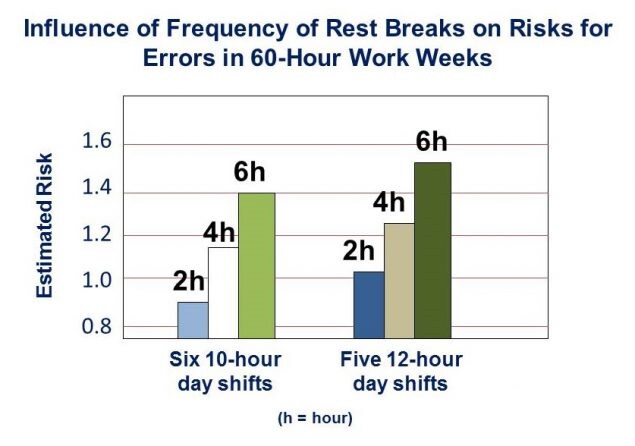NIOSH Training for Nurses on Shift Work and Long Work Hours
Extended Shifts (Continued)
Lastly, Knauth and Hornberger12 recommend providing sufficient breaks. Folkard and Lombardi21 estimate that rest breaks at 2-hour rather than 4- or 6-hour intervals reduce risks for accidents and errors (see Figure 5.1).

Figure 5.1. Estimated risks for accidents and errors are compared between two schedules for day shifts with 60 hours of work per week: six days using 10-hour shifts versus five days using 12-hour shifts. The authors estimate that breaks taken at 2-hour intervals reduce risk for accidents and errors, in comparison with breaks at 4- or 6-hour intervals. Note: Estimated risk for 12-hour shifts with breaks every 2 hours is less than for 10-hour shifts with breaks every 4 or 6 hours. (Adapted from Folkard and Lombardi.21)
Page last reviewed: March 31, 2020
Content source: National Institute for Occupational Safety and Health
